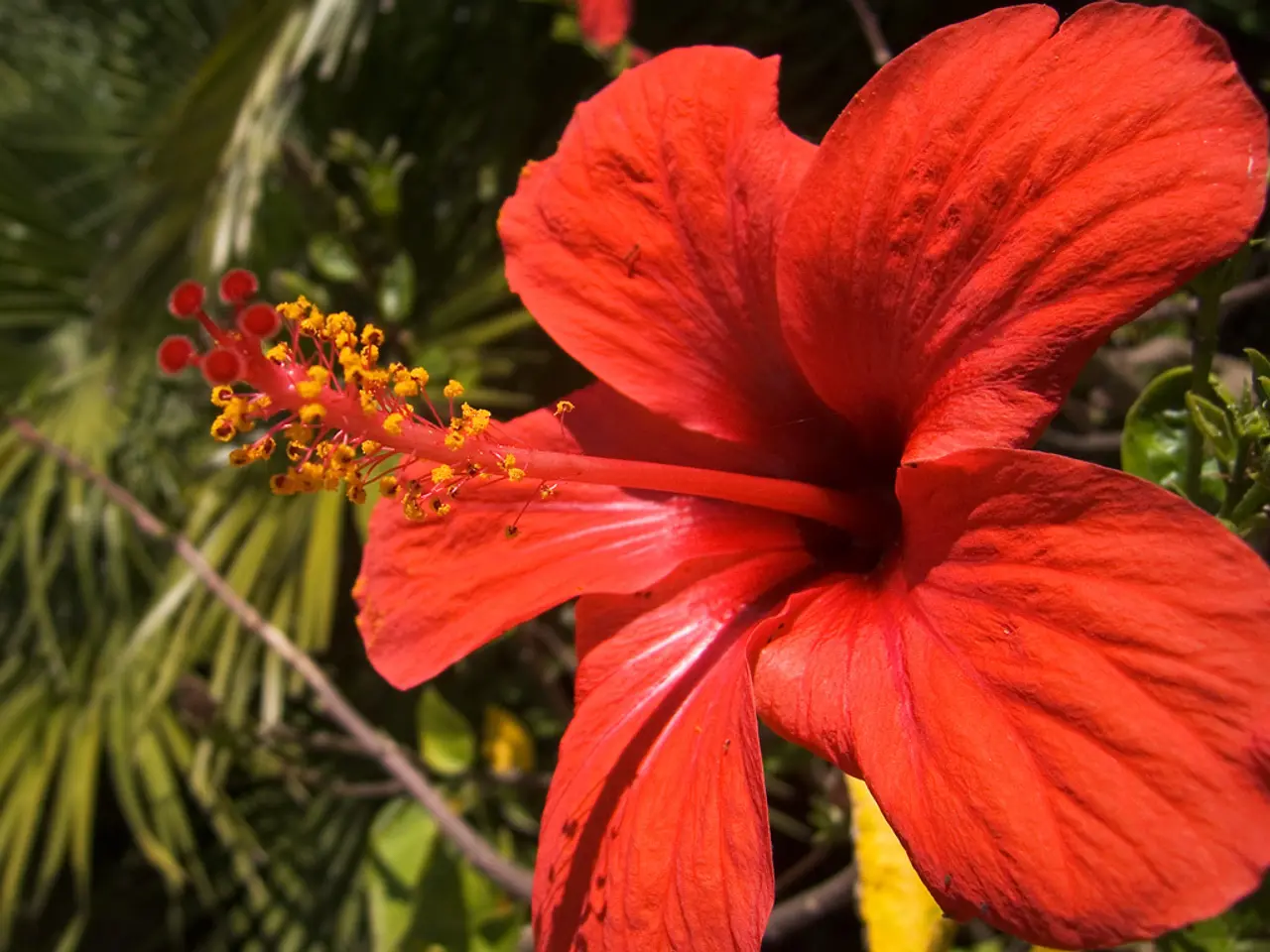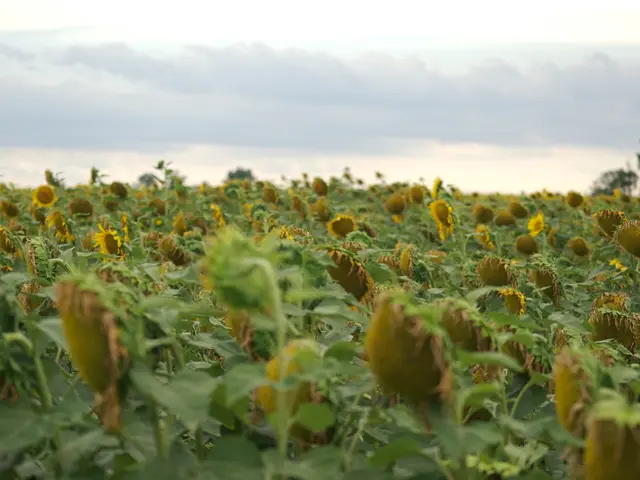Techniques for Trimming Hibiscus Shrubs and Timing for Hibiscus Pruning
Hibiscus plants are a popular choice for summer gardens, and with proper care, they can thrive both outdoors and indoors during the colder months. Here's a comprehensive guide to pruning hibiscus plants for optimal blooming and shaping.
Pruning hibiscus is beneficial, especially in areas with frost issues or when bringing the plant indoors for winter. By pruning, you can increase the number of branches and blooms, maintain an upright plant, and rejuvenate old, leggy plants.
For the best results, prune hibiscus plants in early spring when they are still dormant or just before new growth begins. Cut back last year’s stems by about 4-6 inches from the ground to encourage vigorous new growth and maximize blooming. For perennial hibiscus, cutting stems back to about 6 inches tall in spring is ideal, as all new growth will then emerge from underground.
Key pruning techniques include hard pruning, deadheading, and selective thinning. Hard pruning involves cutting back stems by one-third or to about 4-6 inches to rejuvenate the plant and promote bushier growth. Deadheading refers to regularly removing spent or wilting flowers to prevent seed formation, which conserves energy for producing more blooms. Selective thinning involves removing sparse, leggy, or dead branches to improve air circulation and shape the plant for an attractive form.
Avoid pruning during hot summer months or late fall, as pruning can stress the plant or stimulate vulnerable new growth before winter. For tropical hibiscus, maintain consistent moisture but avoid overwatering, especially during bloom season. Fertilize with a balanced slow-release fertilizer in spring and liquid fertilizer every two weeks during the growing season to support healthy blooms.
Lightly shaping the hibiscus plant is possible during the summer if needed. To prune hibiscus into a standard, cut off the top about 2 inches to encourage branching, remove lower branches close to the stem, and trim the remaining branches to form a ball shape.
Overwintering hibiscus in a cool, dark location such as a basement doesn't require immediate pruning. In warm areas, outdoor hibiscus shrubs can be pruned in the spring after the threat of frost has passed. Proper pruning of hibiscus encourages flowering and improves its shape.
Always use sharp, clean pruning shears when pruning hibiscus. Pruning hibiscus shrubs in late fall prepares them for a growth spurt in spring. A full prune of hibiscus involves cutting each stem back by about a third to two or three nodes, promoting branching, blooming, and a pleasing shape, but delaying blooming till the new growth forms.
For a hard prune, such as rejuvenating an old, leggy hibiscus, take all the stems down to about a foot from the ground, ensuring there are leaves left for photosynthesis.
Nikki Tilley, the author of six gardening books and a gardener for nearly three decades, offers these pruning tips for hibiscus plants. If you have a containerized hibiscus that you overwinter indoors, it will benefit from annual pruning. If you bring your containerized hibiscus inside for the winter and it will be placed in a sunny window, prune it as well.
In conclusion, optimal pruning involves a hard prune in early spring, regular deadheading during the growing season, and selectively thinning to maintain shape and health, combined with proper watering and feeding for the best flowering results.
A beneficial pruning of hibiscus plants can be carried out in home-and-garden settings, especially in winter or during frost periods to increase the plant's branches, blooms, and overall structure. By pruning hibiscus shrubs according to the proper techniques, such as hard pruning, deadheading, and selective thinning, you can rejuvenate old plants, improve air circulation, and shape the plant, ultimately promoting a pleasing lifestyle element in your home-and-garden.






